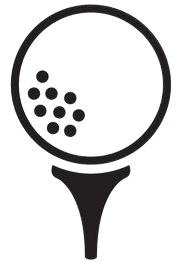Published: 22 October 2025
On 14 October we published our post: “GA Connect Drama: What’s Actually Going On with Golf Australia’s New Handicap System” where we laid out the move from GOLF Link to GA Connect, what was promised and the first signs of trouble.
This update is your follow-through: what’s changed (or not), how we’re responding at The Golf Collective, and why we’re now asking Golf Australia to step up publicly.
So: What’s changed (or not) since then?
Short answer: A few tweaks, but the core issues remain — and they’re not getting the public acknowledgment they deserve.
Here’s what we’re still seeing:
- Score submissions are still inconsistent: Some rounds post correctly, others don’t appear, appear incorrectly or end up marked NSNA (No Score – Not Approved).
- Clubs can’t edit the GA-side records: While our club admin side might have the correct score, the GA side doesn’t allow correction — so you still look ‘wrong’ to GA.
- Course/tee-data migration still patchy: Some venues and tees aren’t fully live or mapped, causing incorrect setups or blocking submissions.
- Login/app/connectivity issues continue: Members being logged out, score upload sessions timing out, histories missing.
- Lack of public, consistent updates from Golf Australia: Outside of FAQ pages and transition announcements, there’s no regular “this is what’s fixed today / this is still under investigation” feed. That silence falls back on clubs.
Clubs across Australia are reporting the same categories of issue. For example, a club bulletin on the rollout describes GA’s own statement: “you may experience occasional interruptions during the initial transition.”
That’s fair — but we all expected better clarity and support.
What we at The Golf Collective are doing
Because we’re not prepared to sit back and say “we’ll wait for it”:
- We’ve logged multiple open tickets with Golf Australia for our club. Each incorrect result, missing score or flagged NSNA gets tracked daily.
- We’re collecting evidence — card photos, signed sheets, screenshots — so we’re ready to submit correction requests as soon as GA enables edits.
- We’re keeping you informed — via this blog, emails, and social posts. We’re tired of silence.
- We’re pressing Golf Australia for better transparency and club backing. The onus shouldn’t fall on clubs alone.
What you need to do (members)
Your part of the process is important — here’s how you can help:
- Play and submit as usual — don’t stop golfing because of the tech woes.
- Keep your signed card or take a clear photo — especially if something looks wrong in your history later.
- If your handicap or record looks wrong, let us know — include the round date, course, tee, what you submitted, any screenshot of the error and a card photo.
- Check your member details — email, DOB, Golf ID. Incorrect data often causes failed uploads.
- Stay tuned: we’ll update you when we hear from GA or attempt repairs.
A message to Golf Australia
Look — we’re aware that major system transitions come with teething problems. That’s acceptable. What’s not acceptable is being left in the dark while clubs bear the fallout.
Golf Australia needs to:
- Publicly acknowledge the scale of this issue — not just to clubs, but to all members and community golfers.
- Provide a clear timeline — what’s broken, what’s being fixed, when clubs and members can expect full stability.
- Support clubs operationally — we’re cleaning up the mess on the ground, while member frustration grows. We need resources, we need updates, we need clarity.
Because right now, clubs like ours are doing the heavy lifting. Our members are asking questions we can’t always answer. The community deserves better.
FAQ (updated)
Q: Will my handicap be permanently wrong because of these glitches?
A: No. Once GA resolves the backend bugs and enables the necessary edit paths, we’ll correct records so that your true results are reflected.
Q: Is this only happening at our club?
A: No — this is a nationwide rollout and the same kinds of issues are cropping up across clubs.
Q: When will everything be fixed?
A: There’s no publicly confirmed date yet. But internal signals suggest some issues may persist into mid-November or beyond. We’ll keep pushing for a clearer date.
Final thoughts
We’re in the midst of one of the biggest overhauls of Australian amateur golf tech in decades. That means some problems were inevitable. But accurate handicaps, fair competition and clear communication aren’t optional.
Thanks for your patience. We’re digging in, not sidestepping, and we’ll keep you posted. If you spot any error in your record, send it through — we’ve got your back.














